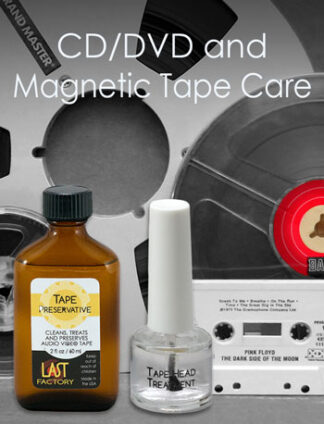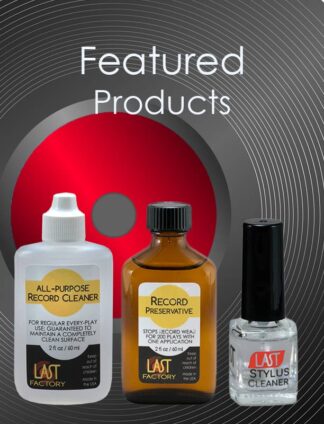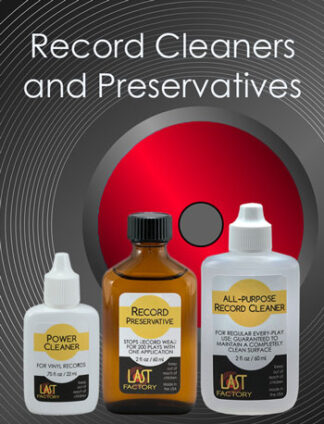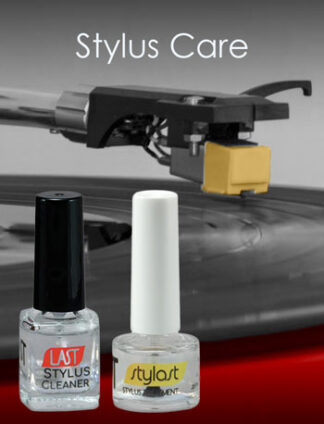Walter: Does Last Record Preservative damage master lacquers (lacquer coated records)? These are the lacquer-on-aluminium pressings which are used to generate stampers. If not, does Last Record Preservative have the same longevity effects on lacquers as on vinyl?
Regards, W.M.
Thank you for your query, and support. In general, LAST Record Preservative has the same wear prevention properties for lacquer masters as it does for vinyl. It will not damage, change, or modify the bulk physical properties of the lacquer coating. This allows the ability to play a lacquer for quality purposes. That said, because the thickness of the lacquer coating is (relatively) thin, the absolute sonic character of a lacquer/aluminum master will not be the same a a vinyl record. The lacquer/aluminum interface presents a HUGE mechanical impedance to the pressure wave generated by the stylus as it traverses the groove. And, while the preservative treatment acts as a “surface shock absorber” within the substantial thickness of a vinyl record, vastly different boundary conditions exist in lacquer coated records.That said, LAST Record Preservative will have the same preservation and wear prevention on the lacquer component of a master as on a vinyl record. However, the aforementioned impedance mismatch can have unintended consequences under the conditions of repeated playback operations. This can occur because the pressure wave generated by the passage of the stylus travels a relatively short distance before being strongly reflected off of the smooth aluminum surface back to the free surface of the lacquer. The lacquer is much more highly homogeneous than typical record vinyl, but can experience high stress and strain when the reflected pressure wave interacts (destructively) with the initial wave generated by the stylus.It might be worth some testing if you have a lacquer that is unsuitable for making a stamper.Thanks again for the questions. Hope this provides some food for thought!Best regards,Walter @ LAST
Thanks for your response, Walter. Very interesting.
I was informed that a lacquer has a normal playing life of perhaps 20 plays. From the sound of it, that may be an overstatement.
My plan is to play part of a lacquer, cut for Classic Records (for actual stamper production), at a hi-fi meeting (Audiophile Society of NSW). It would be the first playing. This is still conjecture as I have not yet won one of these at auction, and their prices vary wildly.
Apart from using Last Record Preservative and using Last Stylus Preservative on the stylus, is there anything else I should do to the lacquer prior to playing?
Regards and thanks, W.M.
Apart from using Record Preservative and Stylast, the only thing that I can think of is to be certain that the stylus is absolutely clean prior to applying the Stylast and commencing play back.I expect that the conventional “wisdom” of a maximum play life of 20 plays, has to do with the destructive effects of shock wave/pressure wave interactions. I am certain the elastic properties of the lacquer come into play as well. Lacquer is generally more stiff (or rigid) than the vinyl mix used in records.If you have a clean copy of the record, it would be an interesting to hear a comparison of record to Lacquer Master sonics.Good luck with your project. I would appreciated hearing from you the results of your demonstration.Best regards, Walter





